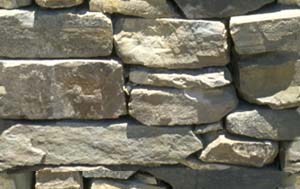CONCRETE / VISUAL
/
COLLAGE

LINKS
MAIN
http://vispo504.blogspot.com/
Have a look & find someone you'd like to collaborate with!
28 Feb: Here are some Lisa Jarnot links:
an interview that includes reference to Some Other Kind of Mission
http://www.chicagopostmodernpoetry.com/Jarnot.htm
Jarnot's own site
http://www.angelfire.com/poetry/lisajarnot/
& her hats project memorializing those killed in Iraq
http://www.angelfire.com/poetry/lisajarnot/iraqhat.html
Feb 16: Here are a few paras from Marjorie Perloff, relevant to Retallack's "Afterimages" (one of our texts for tonight). The page she discusses is page 10 in your book. The essay is "After Free Verse: The New Non-Linear Poetics" and you can find the full text here:
http://articles.poetryx.com/21/
Not images, but "afterrimages," as Joan Retallack's sequence by that title makes clear. "We tend to think," says Retallack in the frontispiece of her book, "of afterimages as aberrations. In fact all images are after. That is the terror they hold for us." "I do not know which to prefer," writes Wallace Stevens in "Thirteen Ways of Looking at a Blackbird," "The beauty of inflections / Or the beauty of innuendoes, / the blackbird whistling / or just after." In Retallack's scheme of things, this becomes "After whistling or just ______": in our fin-de-siècle world, every image, event, speech, or citation can be construed as an "afterthought" or "aftershock" of something that has always already occurred.
One form of "afterrimage" Retallack uses is found text: the poem before us draws on Chaucer (the opening of "The Wife of Bath's Tale") and Swift (book 3 of Gulliver's Travels) among other "literary" sources; it begins in medias res with someone's advice that there is a "need to give latitude which is often silence," followed by the typographical convention of "and/or." In keeping with this choice, no given line follows from the preceding one, at least not in any normal sequence, the text incorporating reportage, question, number, iambic pentameter citation (lines 4-6), and narrative fragment. The last six lines recall Creeley's strategy of counting words rather than feet, stresses, or syllables. The pattern is 4 (at center), 2-2 (left and lowered right), and then a 2-2-2 tercet. And now, come the "afterrimages," chosen, Retallack tells us, by chance operation: thirteen characters or spaces from line 8, six from line 10, two from line 12. These tiny morphemic particles are living proof of what a difference a single letter can make. The ellipsis preceding "all this I see" becomes the mere stutter of all th; "point" loses its p, only to regain it from the capital P of "Paul" that follows; the loss opens up the text so that we think of "joint" or "anoint," the latter certainly being appropriate for St. Paul. And the afterimage of "sunbeams," the meaningless vocalization nb, is a witty comment on the activities of Swift's Laputa. Not only, the poem implies, can sunbeams not be extracted from cucumbers, the word "sunbeams" doesn't break down neatly into sun + beams or even into neatly arranged vowels and consonants, but into the difficult-to-pronounce nb, followed by an exhalation of breath, or visual blank which is so to speak, "silence and/or." The final stop (b) is the voiced equivalent of the preceding p. Retallack's is thus an artifactual, wholly composed meditation on what can and cannot be "extracted from" language.
Susan Howe, I noted above, has referred to her typographical experiments as "abstractions" from "masculine linguistic formations," and many of the poets in Out of Everywhere would concur that such deconstruction has been central to their work. But it is also the case that their poems have many counterparts in the work of Clark Coolidge and Steve McCaffery, Charles Bernstein and Bob Perelman, Bruce Andrews and Christian Bök, and my own sense is that the transformation that has taken place in verse may well be more generational than it is gendered. We have, in any case, a poetics of non-linearity or post-linearity that marks, not a return to the "old forms," because there is never a complete return, no matter how strongly one period style looks back to another, but a kind of "afterrimage" of earlier soundings, whether Anglo-Saxon keenings, formally balanced eighteenth-century prose, or Wittgensteinian aphoristic fragment. The new poems are, in most cases, as visual as they are verbal; they must be seen as well as heard, which means that at poetry readings, their scores must be performed, activated. Poetry, in this scheme of things, becomes what McCaffery has called "an experience in language rather than a representation by it."
I have no name for this new form of sounding and perhaps its namelessness goes with the territory: the new exploratory poetry (which is, after all, frequently "prose") does not want to be labelled or categorized. What can be said, however, is that the "free verse" aesthetic, which has dominated our century, is no longer operative Take a seemingly minor feature of free verse like enjambment. To run over a line means that the line is a limit, even as the caesura can only exist within line-limits. To do away with that limit is to reorganize sound configurations according to different principles.Feb 15: No class. Please come to the memorial reading for Mark Craver, 8 pm in the Concert Hall, grand tier 3rd floor
Feb 16: We'll meet instead at 7:30-10:00 at Brion's in the University Mall shopping center at the intersection of Braddock Road & 123 (Ox Road) across from campus.